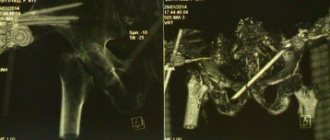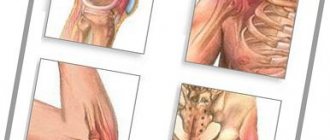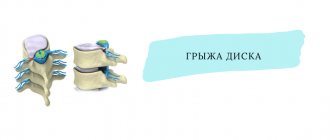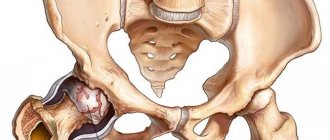In surgical dentistry, one of the most common pathologies is osteomyelitis of the jaw - a purulent-necrotic pathological process that affects the bone tissue of the upper or lower jaw. This is a serious disease that, without timely treatment, can lead to serious consequences. Young men under 40 years of age are at risk.
Why this disease develops, how to recognize it in time and what the treatment is - we will look in more detail in our article.
What is bone osteomyelitis?
In general surgery, bone osteomyelitis is an inflammatory process in bone tissue with a complex pathogenesis. Today, experts highlight different options for the development of the problem. But it is impossible to establish the exact reason, since each of the existing options only complements all the others. Therefore, osteomyelitis is considered a multifactorial disease. The occurrence of pathology is facilitated not only by infection in bone tissue, but also by problems in the functioning of the immune system and impaired blood flow.
When an infectious agent appears in bone tissue, the body reacts very actively to this, provoking the development of a purulent inflammatory process. In order to get rid of the infection, leukocytes move to the affected area, producing a large number of enzymes. As a result, bone structures are destroyed and cavities with liquid pus are formed. They contain sequestra or pieces of bone. In some cases, nearby soft tissues may also be affected, resulting in fistulous tracts appearing on the skin.
With proper functioning of the immune system, the inflammatory process can be limited on its own with further transition to a chronic form. However, immunodeficiency leads to the spread of infection and the formation of serious purulent complications, including sepsis. It often ends in disability or death.
Etiology
The main causative agent of osteomyelitis is Staphylococcus aureus, but damage can also be caused by streptococci, pneumococci, Pseudomonas aeruginosa, etc. Osteomyelitis is the result of hematogenous spread of infection from another source. For example, carious teeth, sinusitis, tonsillitis, pyoderma, infected wounds. Infection can also be acquired through contact through open injuries and deep abscesses.
Risk factors for the spread of processes are: chronic infections, diabetes mellitus, somatic diseases, hypothermia, any reactions that contribute to a decrease in immunity.
Osteomyelitis in the dental field
Osteomyelitis of the jaw accounts for about 1/3 of the total number of cases of detection of this problem. This is due to the presence of elements of the dentition, which become a source of infection of bone tissue. In addition, the jaw has certain features that are ideal for the development of osteomyelitis:
- rapid growth of the jaw and significant changes in its structure during the transition from baby teeth to molars;
- increased propensity of myeloid bone marrow to become infected;
- a large number of vessels in the maxillofacial area;
- minimum thickness of bone trabeculae;
- Haversian canals are relatively wide.
For this reason, the penetration of various microorganisms into bone tissue very often leads to osteomyelitis.
Main reasons
In most cases, osteomyelitis of the jaw develops due to pathogens entering the bone tissue. Infection can occur in the following ways:
- Odontogenic pathway. In such cases, the source of the problem is a tooth with caries. At the first stage, microorganisms penetrate into the pulp tissue, and then into the bone tissue (through dental tubules or small vessels).
- Hematogenous route. Microorganisms enter the maxillofacial area through the blood from the main area of infection. There are different sources of infections - tonsillitis, furunculosis or erysipelas. Sometimes osteomyelitis develops against the background of scarlet fever, typhus or influenza.
- Traumatic path. The pathology develops as a result of infection after surgery on the jaw or fracture. Such cases are considered the rarest.
The odontogenic path is in most cases accompanied by infection of the lower jaw, but with the hematogenous path the upper jaw is usually affected. The second option involves the location of a purulent focus deep in the tissue with minimal manifestation of periostitis.
Sources
- Lukyanenko V.I. Osteomyelitis of the jaws.
- Modern features of clinical manifestations of odontogenic and traumatic osteomyelitis of the lower jaw. Fomichev E.V.
Attention!
This article is posted for informational purposes only and under no circumstances constitutes scientific material or medical advice and should not serve as a substitute for an in-person consultation with a professional physician.
For diagnostics, diagnosis and treatment, contact qualified doctors! Number of reads: 2205 Date of publication: 04/29/2019
Dentists - search service and appointment with dentists in Moscow
Acute osteomyelitis
Often, signs of this form of the disease appear unexpectedly and are manifested by general symptoms. General manifestations are not specific and indicate only serious inflammation in the body:
- a significant increase in body temperature (minimum 39 degrees);
- increased sweating;
- aching joints, feeling of weakness, headaches;
- pallor of the skin.
In addition to these manifestations, the following local symptoms appear:
- Severe continuous pain in the area where the source of infection is located. In this case, inflammation constantly develops, which leads to increased pain. As the infection spreads, the localization becomes less obvious, so the entire jaw or a certain part of the skull may ache, radiating to the corresponding eye or ear area.
- The tooth that is the source of the problem is loose. If a diffuse inflammatory process develops, nearby teeth may also become loose.
- Swelling of the soft tissues contributes to spasm of the masticatory muscles, as well as disruption of facial symmetry.
- Often, the inflammatory process affects the jaw joint, which leads to the development of arthritis, due to which the mouth is constantly in a slightly open state (it is impossible to close the jaw completely).
- Swelling and soreness of the oral mucosa and gums.
- Serious enlargement of regional lymph nodes.
Patients with the hematogenous form of the disease face the greatest difficulties, since it affects other cranial bones and internal organs. All this has a very negative impact on the future prognosis.
Traumatic osteomyelitis has a blurred clinical picture against the background of trauma. But when, a few days after a jaw fracture, the pain intensifies, the body temperature rises, health deteriorates, significant swelling of the oral mucosa and purulent discharge appears, the diagnosis is obvious.
Symptoms
Acute osteomyelitis appears very suddenly. If children are small, then they are noted to be moody and lethargic. They don’t want to eat, they don’t sleep well, and their temperature rises. If the child is older, then he may feel unwell, general weakness, and may complain of toothache.
When the disease is still in its early stages, the following manifestations may be present:
- bone pain. Initially it has a local character, and then diffused;
- the oral mucosa swells, hyperemia is noted;
- on the side that is affected, the soft tissues become swollen;
- the face becomes asymmetrical;
- chewing muscles may spasm.
If an injury occurs, signs of the disease appear after 3-5 days. The child feels much worse, the temperature rises, and pus may also be released if the mucous membrane has been damaged.
Chronic osteomyelitis
The transition of the problem to a chronic form is accompanied by an improvement in the patient’s well-being. But over a long period of time, patients experience weakness, problems with appetite, problems with night rest, and pale skin.
During the examination, in the presence of a chronic form of the disease, fistulas are discovered that open in the mouth and on the skin of the face. Small amounts of pus come out of them. In addition, an increase in the size of regional lymph nodes, swelling of the mucous membranes and loose teeth are often observed.
Pain in the remission stage is minimal or absent. However, during the acute stage, the pain may intensify, and it may be difficult for the patient to determine its specific location.
How does the disease manifest itself?
At first, osteomyelitis can occur secretly, without any specific signs. The patient simply feels some weakness, but explains it by other reasons. Without suspecting what caused the malaise, he can begin to be treated with traditional recipes and take anti-inflammatory pills. This further “blurs” the clinical picture and in the future may prevent a quick and correct diagnosis.
Osteomyelitis of the upper/lower jaw is indicated by:
- increased fatigue;
- increased sweating;
- headache;
- insomnia;
- decreased appetite;
- increase in body temperature (but it may not exist).
It’s good if a tooth located in the affected bone area starts to hurt. Then the patient will be able to figure out what is causing his torment.
With osteomyelitis, some teeth hurt when pressed or bitten. The gums near them swell and become red. Loosening occurs. Toothache often radiates to the ear, submandibular lymph nodes, neck, mouth, eye, temple. Lips and cheeks may become numb. In advanced cases, the pain spreads throughout the face.
Gradually, a yellowish plaque mixed with pus begins to deposit in the gingival pocket separating the tooth from the soft tissues. Then there are:
- severe pain when chewing food;
- bad breath;
- pallor of the skin.
The whites of the eyes may turn yellow. Blood pressure often increases. Zones of necrosis appear. Their area is increasing every day. The inflammatory focus can spread to the alveolar nerve. Then the latter becomes inflamed.
Teeth located in the area of dying bone become very loose. If treatment is not started, they will fall out.
If osteomyelitis of the jaw becomes chronic, the symptoms become less pronounced. The patient feels more or less normal. But some alarming symptoms still persist. Among them:
- pain when feeling the skin of the face;
- enlarged lymph nodes;
- refusal to eat;
- frequent fistulas in the oral cavity, through which pus mixed with blood drains;
- loose teeth;
- local swelling of the gums.
As soon as osteomyelitis worsens, the patient again begins to feel very bad.
Diagnostic methods
Suspicion of the presence of a disease may appear after receiving relevant complaints from the patient and conducting a general examination. In order to establish an accurate diagnosis and fully formulate it, it is necessary to perform x-ray diagnostics.
Confirmation of the presence of osteomyelitis of the jaw bone can be early and late X-ray signs. Early radiological indicators are:
- the presence of zones of rarefaction and compaction of bone tissue, alternating with each other;
- minimal thickening of the periosteum caused by periostitis;
- lack of clarity and blurred bone pattern.
Late radiological manifestations of osteomyelitis include:
- formation of foci of destruction with the formation of sequesters 1-1.5 weeks from the onset of the disease;
- an increase in the thickness and density of bone tissue in the area of inflammation.
In difficult cases, the doctor may prescribe an MRI examination, the results of which help to more accurately detect the extent of tissue damage. Also, such diagnostics helps to visualize small lesions with purulent contents.
In addition to X-ray diagnostics, patients also undergo general clinical tests, with which the doctor can determine the activity of inflammation:
- a general blood test allows you to detect an increased content of leukocytes, an insufficient number of red blood cells, determine hemoglobin and features of the leukocyte formula, indicating the presence of an inflammatory process;
- biochemical blood test showing the presence of inflammatory markers and electrolyte disturbances.
In order to identify the causative agent of the pathology and determine the possibility of using antibacterial medications, a bacteriological examination of the contents of the fistula tracts is performed. The discharge is inoculated onto special media with further microscopy of the samples.
Diagnosis and treatment of inflammation
Acute osteomyelitis of the jaw is diagnosed by a dentist based on the clinical picture and the collected medical history. Additionally, laboratory tests and x-rays of the jaw are prescribed. In case of chronic pathology, the image will show signs of osteoporosis and sequestration.
Treatment begins with removal of the focus of necrosis, the affected tooth or abscess is removed, the wound is washed with antiseptics and antibiotics, and drainage is installed. If the teeth are hypermobile, therapeutic splinting is performed.
Additionally, anti-inflammatory drugs and antibiotics are prescribed. After stopping the acute process, physiotherapy is indicated to speed up tissue recovery.
In case of chronic pathology, an operation may be required, during which the doctor will remove the affected areas of bone tissue and fill the voids with osteoconductive material. If there is a risk of a pathological fracture, therapeutic splinting is used, which helps to avoid injury.
Differential diagnosis
This method is used for the reason that an error at the stage of determining the diagnosis can cause the choice of the wrong treatment method and the lack of desired results during therapy. This leads to further progression of the disease and a negative impact on overall health.
Specialists perform differential diagnosis of osteomyelitis with the following diseases:
- acute form of pulpitis;
- suppuration of a dental cyst;
- purulent inflammation of soft tissues in the maxillofacial area;
- acute periodontitis;
- periostitis;
- odontogenic sinusitis in acute form.
General information about the disease
With osteomyelitis, destructive changes in the bone tissues of the oral cavity are observed. It is this diagnosis that most often forces dental surgeons to pick up a scalpel. In terms of prevalence, it can be compared with periodontitis and periostitis.
If the disease is not treated, the bone tissue will bend, become thinner, and become incredibly fragile. Painful fistulas will begin to form. A person will still not be able to tolerate such symptoms for a long time, so there is no need to lead to complications.
Complications
As a result of incorrect diagnosis or lack of proper treatment in the first stages of osteomyelitis, serious complications often develop, which often lead to disability and even death of the patient.
The most common complications of osteomyelitis of the jaw bones:
- Thrombophlebitis of the facial veins, pericarditis, mediastinitis and complex forms of pneumonia.
- If the source of inflammation is located in the upper jaw, the infection can affect the eyeball, which leads to atrophy of the optic nerve and permanent loss of vision.
- Soft tissue abscesses, purulent leaks and phlegmon, which can quickly spread to the mediastinum and cervical area. The danger of the problem lies in the fact that it is accompanied by sepsis, which quickly affects key organs with the simultaneous appearance of septic shock and death.
- Purulent lesions of the meninges and the formation of meningitis.
Treatment methods
Therapy for osteomyelitis of the jaw is carried out to achieve two key goals:
- Get rid of the source of infection in the bones and nearby soft tissues as quickly as possible.
- Correct functional disorders caused by the presence of infection.
All patients are required to be hospitalized in the surgical department, which deals with problems related to the maxillofacial area. In the absence of an appropriate hospital, the patient is treated in a department that has experience in the field of dental surgery. The list of main therapeutic actions is as follows:
- An operation involving opening a purulent area in order to remove necrotic masses and ensure effective drainage.
- Improving the functioning of the immune system.
- The use of medications to relieve intoxication and inflammation.
- Use of broad-spectrum antibacterial agents.
It is very important to adhere to a complete diet with a complete list of important vitamins, minerals and nutrients (patients are prescribed a hypoallergenic diet), as well as to maintain bed rest.
Consequences of the disease and methods of recovery
Suffered purulent inflammation of the jaw in acute or chronic form often has serious consequences that negatively affect the quality of life.
- Often, surgical intervention during the treatment of a disease is accompanied by the removal of one or more elements of the dentition. As a result, the patient has to subsequently contact an orthodontist and undergo prosthetics.
- In many cases, infection of soft tissues causes scar deformation. This complex cosmetic problem can be corrected using plastic surgery methods.
- Septic conditions, which can develop against the background of the underlying pathology, can disrupt the full functioning of internal organs and negatively affect the functioning of the immune system and hematopoiesis.
- Severe bone lesions can change the natural shape of the jaw. This is not only a cosmetic problem, but also negatively affects the efficiency of the maxillofacial apparatus.
- Infection of a joint can lead to arthritis or arthrosis. This often leads to the formation of ankylosis and significant impairment of jaw mobility.
- Damage to the pathology of the upper jaw can affect the zygomatic bone and orbit with the further appearance of phlegmon or an abscess of the eyeball. Ultimately, the patient loses vision and it is no longer possible to restore it.
In some cases, the recovery period after osteomyelitis of the jaw is several years. All patients are monitored at the dispensary until all emerging violations are eliminated.
Rehabilitation involves the following procedures:
- application of physiotherapy methods;
- performing surgery for medical or cosmetic reasons;
- prosthetics of removed elements of the dentition (if necessary);
- preventive measures to avoid recurrence of the problem.
Classification
Osteomyelitis of the jaws (photo) is classified according to several parameters.
Osteomyelitis may be caused by:
- Infectious
a) Single-gene. It is a consequence of dental disease - caries, stomatitis. The most common type of pathology accounts for 75% of all cases of osteomyelitis.
c) Non-odontogenic (hematogenous). The pathogen enters the bloodstream from other foci of infection. May be a consequence of chronic tonsillitis, diphtheria, scarlet fever.
- Non-infectious (traumatic). The result of mechanical damage to the jaw or a wound through which infection enters. Osteomyelitis can occur under the influence of a growing malignant tumor or become a complication after dental surgery. For example, if the nerve tissue is not carefully removed from the tooth socket.
According to the course of the disease, osteomyelitis of the jaw occurs:
- Spicy. It lasts 7–14 days, then passes into the subacute stage - when a fistula forms at the site of inflammation and exudate flows out from the site of inflammation.
- Chronic. Lasts from a week to several months. It ends with the rejection of dead bone areas through the fistulous tract. Treatment at this stage is mandatory.
- Subacute. The transitional form between acute and chronic disease lasts 4–8 days. The painful signs subside, but the infection is actively spreading.
According to the location of the pathology:
- Osteomyelitis of the upper jaw.
- Osteomyelitis of the lower jaw.
By coverage:
- Limited. The inflammation covers the alveolar process or the area of 2–4 teeth of the jaw.
- Diffuse. The pathology covers most or all of the jaw.
According to clinical and radiological forms, chronic odontogenic osteomyelitis is:
- productive. During the healing process, it does not form sequesters (dead bone areas);
- destructive. Upon recovery, it forms sequesters.
- destructive-productive.
Preventive actions
Prevention is important not only to prevent the development of purulent inflammation, but also to minimize the likelihood of complications. With the help of preventive measures, you can also speed up rehabilitation if it was not possible to prevent the disease:
- Timely elimination of carious formations, even if there are no clinical symptoms.
- Sanitation of various foci of infection.
- Physical activity, a balanced and nutritious diet, which contribute to the effective functioning of the immune system.
- Compliance with the doctor’s recommendations after injury, during recovery after surgery or tooth extraction.
In conclusion, I would like to emphasize that although modern medicine has made great progress, osteomyelitis of the jaw bone still remains a serious problem. Thanks to the timely detection of symptoms of pathology and proper treatment, it is possible to significantly increase the likelihood that the patient will be able to fully recover and the quality of his future life will not be affected.
Prevention
Preventive measures are not only the key to preventing the development of osteomyelitis, but also a factor that reduces the risk of complications and shortens the recovery period if the disease cannot be avoided:
- Timely treatment of caries, even if it has no clinical manifestations.
- Maintaining normal immune status through regular physical activity, rational and nutritious nutrition.
- Sanitation of all chronic foci of infection in the body.
- In case of injury, in the postoperative period or after tooth extraction, compliance with all preventive medical prescriptions.
In conclusion, it should be noted that, despite all the achievements of modern medicine, osteomyelitis of the jaw in adults and children does not lose its relevance. Timely detection of its signs and adequate treatment increase the patient’s chances of a full recovery and maintaining a high quality of life.
»








